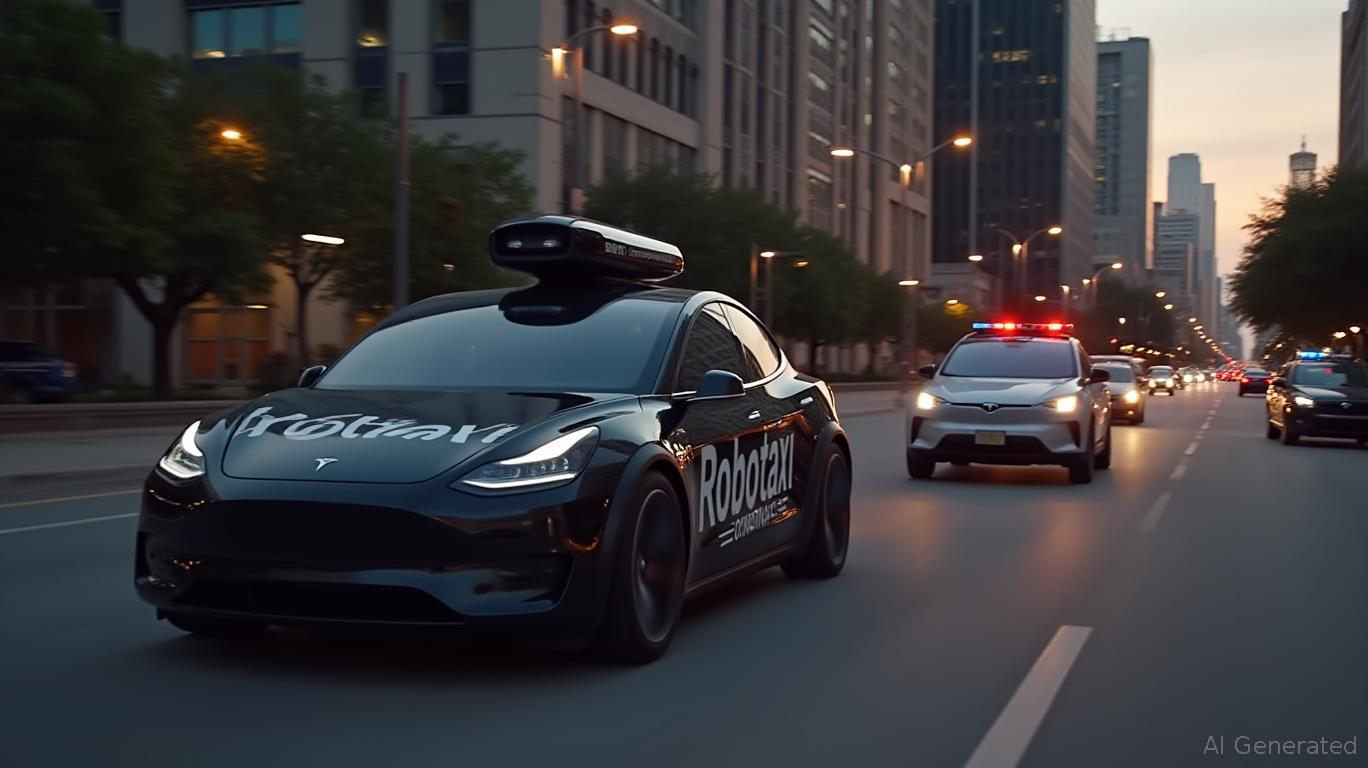Tesla's Autonomous Taxi Gambit: Can First-Mover Speed Outpace Safety Scrutiny?
Tesla's June 12 rollout of driverless Robotaxis in Austin, Texas, marks a bold leap into autonomous mobility—a race where speed and regulatory agility could cement the company's dominance or expose its vulnerabilities. As the first automaker to deploy fully autonomous vehicles on public roads without a safety driver,
is betting its factory-to-road Model Y strategy will outpace competitors like Waymo. Yet, the stakes are high: mishaps could derail stock momentum fueled by Musk's timeline and Texas's lax oversight. Here's why investors must weigh Tesla's first-mover advantages against the risks of rushing into uncharted territory.
Strategic Advantages: Regulatory Agility and Scalable Hardware
Tesla's decision to base its Robotaxi rollout in Texas is a masterstroke. Unlike California's stringent regulations, Texas law imposes no special permits for autonomous vehicles—only basic safety and insurance requirements. This regulatory vacuum allows Tesla to deploy its fleet swiftly, avoiding the lengthy approvals faced by Waymo in states like Arizona. “Texas's hands-off approach is a goldmine for first movers,” says analyst Brian Mulberry, highlighting how Tesla's Model Y can hit the road with minimal bureaucracy.
The Model Y's scalability is another edge. Unlike Waymo's purpose-built autonomous cars, Tesla's Robotaxis are standard production vehicles retrofitted with its AI4 FSD computer. This “hardware-first” approach avoids costly custom engineering, enabling Tesla to leverage its existing manufacturing capacity. By 2025, every new Model Y is FSD-ready, meaning Tesla can activate Robotaxi mode with a software update—a model Waymo's hardware-dependent fleet cannot match.
The recent DMV recognition of Tesla as an “Autonomous Vehicle Operator” in Austin further underscores its strategic progress. Listed alongside Waymo and Zoox, this status signals regulatory compliance and a green light for expansion. Musk's June 2025 timeline—employee beta on June 12, public launch by July—has already sparked optimism, with shares rising 8% in early June on rumors of test sightings.
Risks: Liability, Technical Flaws, and Skepticism
Yet, the risks are glaring. Tesla's reliance on its controversial Full Self-Driving (FSD) system is a double-edged sword. While FSD v13 enables the Austin rollout, its inconsistent performance—erratic lane changes, delayed traffic light recognition—has drawn criticism. “This is a Disneyland ride on steroids,” says software expert Dan O'Dowd, citing Tesla's lack of rigorous testing compared to Waymo's millions of miles logged.
Liability looms largest. Texas law holds Tesla responsible for autonomous vehicles, not the passengers. NHTSA's ongoing probe into FSD-linked accidents (including a May 2025 near-collision in Austin) could lead to recalls or fines if unresolved by June 19. Legal expert Brett Schreiber warns, “Tesla's liability defense—'we told you it's autonomous'—may not hold if software flaws cause harm.”
Musk's history of missing deadlines also fuels skepticism. His 2024 pledge for “full autonomy” by June 2024 was pushed to 2025, and even the June 12 launch hinges on resolving FSD's edge-case failures. Competitors like Cruise, which prioritize gradual testing over hype, contrast sharply with Tesla's “deploy now, perfect later” ethos.
Stock Momentum: Riding the Regulatory Wave or Overvaluing Risk?
Tesla's stock has plummeted 40% since December 2024, reflecting investor wariness about execution risks. Yet, Musk's June timeline and DMV recognition have sparked short-term optimism, with Cathie Wood's Ark Invest reaffirming a $2,600 price target by 2030. This hinges on Tesla's ability to scale Robotaxis profitably—a $0.20/mile cost for its Cybercab (vs. Cruise's $0.35/mile) could dominate ride-hailing.
However, near-term hurdles could prolong volatility. NHTSA's June 19 deadline for FSD transparency, potential lawsuits over liability, and Austin's traffic incidents (e.g., robotaxis blocking intersections) may test investor patience. Analysts at Morningstar note Tesla's “aggressive 2026 profitability target” risks repeating past overpromises.
Investment Takeaway: Speed vs. Safety—A Calculated Gamble
Tesla's Robotaxi rollout is a high-stakes bet on first-mover advantage. Its Texas strategy, scalable Model Y fleet, and Musk's relentless deadlines position it ahead of rivals. Yet, the path is fraught with technical, regulatory, and legal pitfalls.
For bulls: Tesla's software-driven scalability and Cybercab vision could redefine mobility. A successful Austin launch—combined with Optimus robots' factory adoption—supports the $2,600 target.
For bears: FSD's flaws, liability exposure, and Musk's track record of missing deadlines make this a high-risk play.
Our advice: Tesla's stock offers asymmetric upside for long-term investors willing to tolerate volatility. However, short-term traders should wait for tangible Robotaxi performance data post-June. As Musk himself said, “The hardware is ready—the software needs polishing.” Until that polish shines, Tesla's autonomous future remains a race against both time and trust.
Disclosure: The author holds no positions in Tesla or related stocks.

Comments
No comments yet